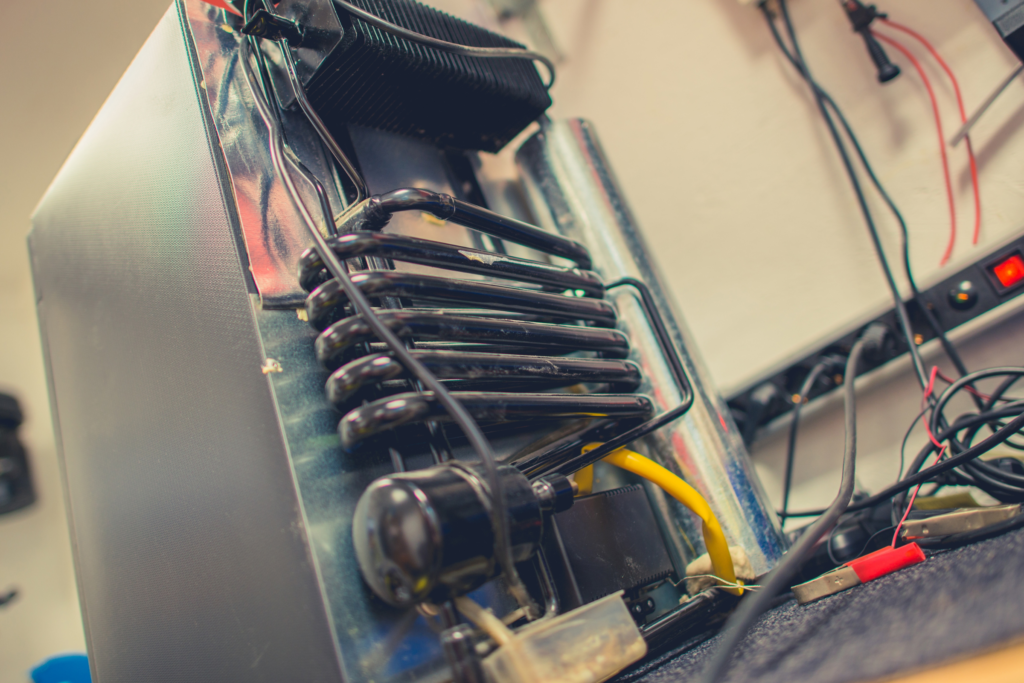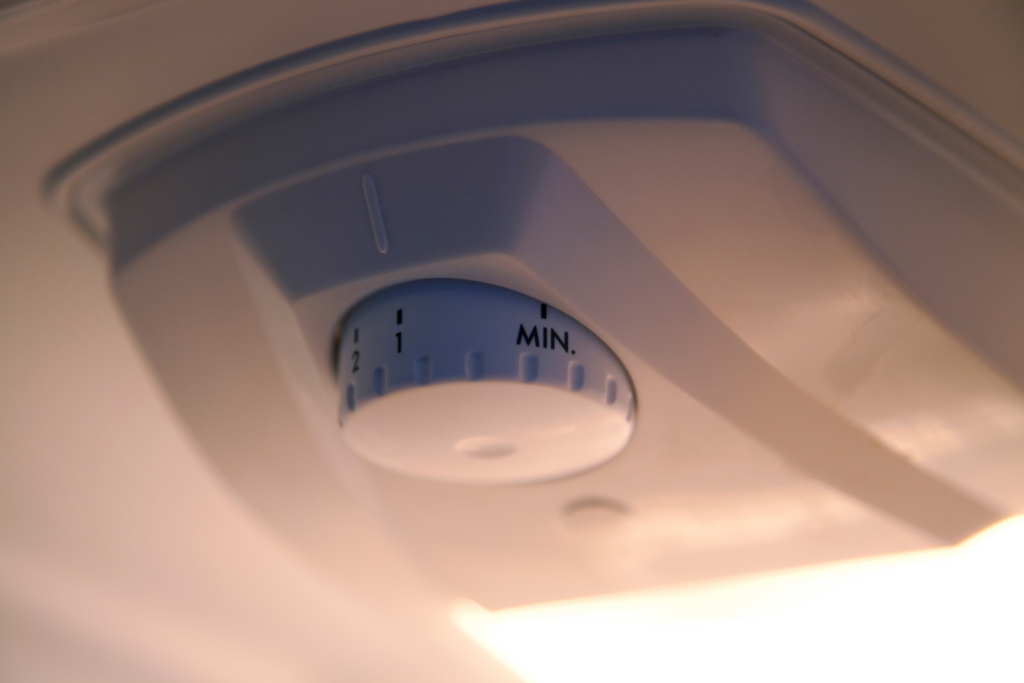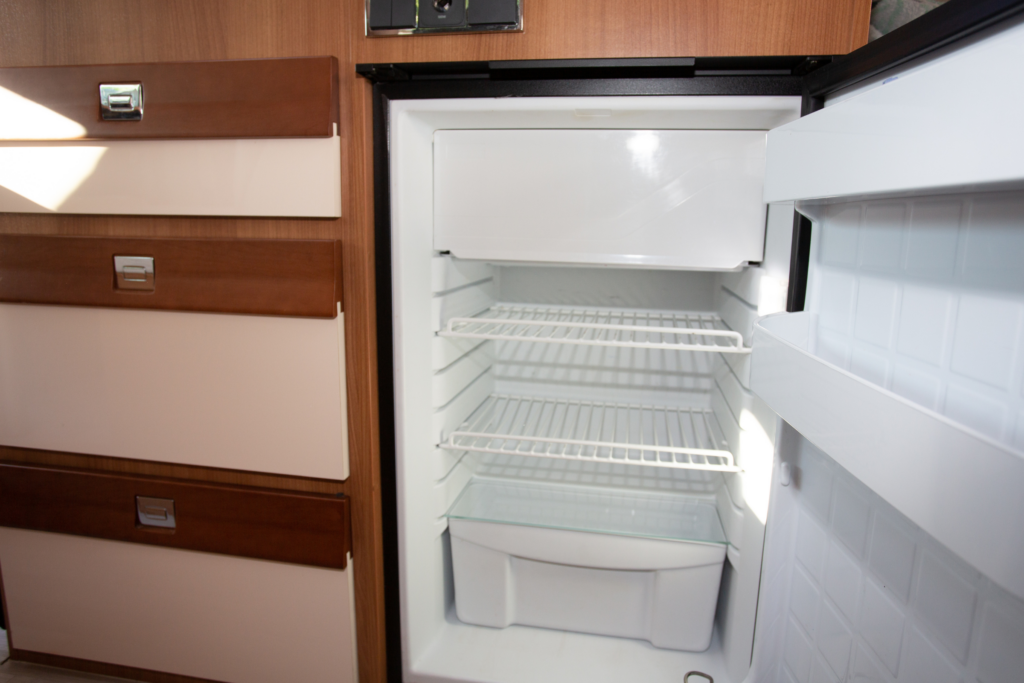Why is my RV Fridge Icing up? (5 ways to fix it)
If you’re having trouble with your RV fridge icing up, it won’t run as efficiently as possible. To prevent RV refrigerators from icing up, keep a few causes in mind. This will save you a lot of frustration and let you enjoy your trip!
Your RV fridge will ice up because it was left slightly open, it’s set too low, the drain tubes are blocked, there is high humidity, or faulty parts such as the thermistor.
Learn why you’re having a buildup of ice and what solutions are available below. In no time, you’ll be able to stop worrying about your RV fridge!
How does an RV fridge work?
Most RV fridges are absorption fridges. This style of refrigeration works using the temperature properties of ammonia, hydrogen, and water.
The fridge heats the ammonia and water, which separates the two. The ammonia then goes on to condense and cools to a liquid. This liquid ammonia is introduced to hydrogen in gas form.
When hydrogen gas and liquid ammonia meet, the ammonia evaporates while still being cool. This gas is used to cool the internal compartment of the fridge through coils. The entire process is cyclical, and ideally, no gas is lost.
Is it Normal for an RV Fridge to Ice Up?
Yes, if the RV fridge does not have an auto-defrost cycle, you’ll need to defrost it occasionally if you use it continuously.
It may take about 3-4 weeks or longer, depending on the operating environment of the fridge, humidity, and fridge usage.
Should there be ice buildup within a few days after defrosting, there is likely a problem with the fridge door seals or a blocked drain tube.

Why RV Fridge forming ice is bad (How to Defrost it)
If the fridge’s back or cooling fins ice up, then the refrigerator will not cool as well. Ice buildup in the fridge slows the fridge’s ability to extract heat and cool the food.
The fridge has to run more frequently yet does not cool as well.
Foods in the fridge are more likely to spoil, leading to waste and increasing the likelihood of food poisoning.
How to Defrost an RV Fridge?
Defrosting removes the ice buildup. However, it takes time. It is best that you monitor the fridge for frost buildup. Do not wait for it to freeze up.
Steps to Defrosting the Fridge
You can use a hair dryer to defrost the fridge.
- Switch off the fridge
- Remove food items that may get spoiled with the fridge off, such as cheese, milk, and any others
- Set the hair dryer to the warm setting and gently blow the warm air over the fridge’s cooling fins and surfaces to melt the ice.
Repeat until the ice has been removed.
Note: Do not direct the warm air from the dryer to the fridge’s walls or other plastic surfaces in the fridge, or else they’ll warp.
Why is your RV Fridge Icing Up?
If the RV fridge is icing up, you need to determine the cause so that you can stop it. Here are the 5 most common reasons an RV fridge will ice up.
#1. The RV fridge door seals may not be keeping out the surrounding air
If the seals are not entirely keeping out the surrounding moist air, you’re likely to have faster icing up of the fridge.
You can try the dollar bill test to check if the fridge doors are closing firmly.
Dollar bill test
Insert a dollar bill between the fridge door seals you are checking and close the door.
Try to pull out the dollar bill. The door seal section is fine if it slides out with some resistance.
Repeat this test for the remainder of the fridge door seals. If the dollar slides out without resistance, the seals may be out of position or damaged.
Fix: Align the seals and replace the damaged seals.
If the door is not closing correctly, contact the fridge supplier if the fridge is still under warranty.
Monitor to see if there is an improvement in the operation of the RV fridge once the seals are fixed, or the door is repaired.
#2. Your fridge’s thermostat setting may be set too low
Is it set to the lowest level? Does it need to be set to the lowest setting to preserve the food in the fridge?
You might be able to limit the frosting by raising the temperature slightly yet keeping the food fresh and safe.

# 3. The drain tubes may be blocked
Do you have a buildup of water on the drain tray below the fridge fins or at the bottom of the fridge?
If so, the drain tube may be blocked, leading to water buildup at the bottom of the fridge.
This, in turn, contributes to creating a moist environment in the fridge that leads to ice buildup on the fins.
Fix: You can poke the drain hole with a drain hole cleaner (which comes with the fridge) or a plastic straw to remove any blockages that there might be in the fridge.
Monitor the fridge operation after unblocking it to see if there is an improvement.
#4. The fridge’s thermistor may not be installed properly or may be faulty
Confirm that the fridge thermistor is installed on the right fin for your fridge model and is working well.
The thermistor senses the fridge’s internal temperature and switches the fridge on and off accordingly.
If the thermistor is broken, the fridge cannot sense the temperature, which can lead to icing up.
Fix: Consult the fridge manual and confirm that the thermistor is installed in the recommended position on the cooling fins.
Check the fridge manual on how to test the thermistor. If you don’t have the manual, you can contact the manufacturer.
While you do this, you can perform a basic test. Take a cup of water with a thermometer in it and place it in the fridge. After 24 hours, read the thermometer. If it is noticeably different than the setting you have your fridge on, the thermistor is placed incorrectly or is faulty.
#4. The fridge door may be opened for long periods
Leaving the door ajar and frequently opening and closing the fridge door exposes the fins to moist air faster than usual and leads to ice buildup.
Check if this might be an issue. Minimize the fridge door opening and monitor if this slows ice buildup.
#5. Cracks may be allowing moist air to enter the fridge
If you’ve checked all of the above options and it’s still icing up, you may have to inspect the fridge’s interior.
Broken surfaces allow moist air to enter the fridge when the door opens, leading to icing up.
Fix: If your fridge has cracks or holes, you will have to replace the unit. Repairs will be temporary fixes and should not be relied upon.
How to stop RV refrigerator from freezing
Once you’ve resolved the problem, you’ll want to prevent your RV refrigerator from icing in the future. There are a few simple things you can do to help this. That said, it is difficult to stop your fridge from icing up entirely.
- Check the fridge’s seals regularly. The seals are some of the most important parts of a refrigerator.
- Clean the drain tube from time to time. As mentioned above, a poorly draining drain tube can cause freezing.
- Minimize how much you open the RV fridge. This can let in humidity that will eventually form ice, especially in humid areas.
- Ensure your RV is level. Due to the liquids and gasses involved in a standard RV fridge’s operation, it is best to have it on level ground.

How to Defrost an RV Freezer?
If your RV freezer is also freezing, you should know how to defrost your RV refrigerator freezer. Below is a quick list of instructions.
- Switch off the fridge.
- Remove the food from the freezer and temporarily store it in another fridge/freezer.
- Place a towel at the bottom of the freezer.
- Next, soak a towel in hot water. Apply the hot towel over the frosted surfaces so that the ice melts.
- Repeat this until the ice melts.
Monitor the freezer for frost buildup from time to time and defrost to minimize the excessive ice buildup.
Summary of RV fridge icing up
If your RV’s fridge is icing up, it’s because the cooling fins are exposed to moist air.
If your fridge is icing up, inspect the seals to ensure the door closes firmly. Minimize frequent opening of the fridge door and inspect for and close any leaks that may lead to surrounding air entering the inside of the fridge.
If, however, your RV fridge keeps shutting off, it may be blowing fuses.
Let Us Know How We’re Doing!
Did this expertly prepared resource answer your question?
Do you have another question about home maintenance, home improvement projects, home appliance repair, or something else?
Get more information, send in questions and keep the discussion going by contacting the I’ll Just Fix It Myself company customer service team at at 1-800-928-1490 or Email us at [email protected]
